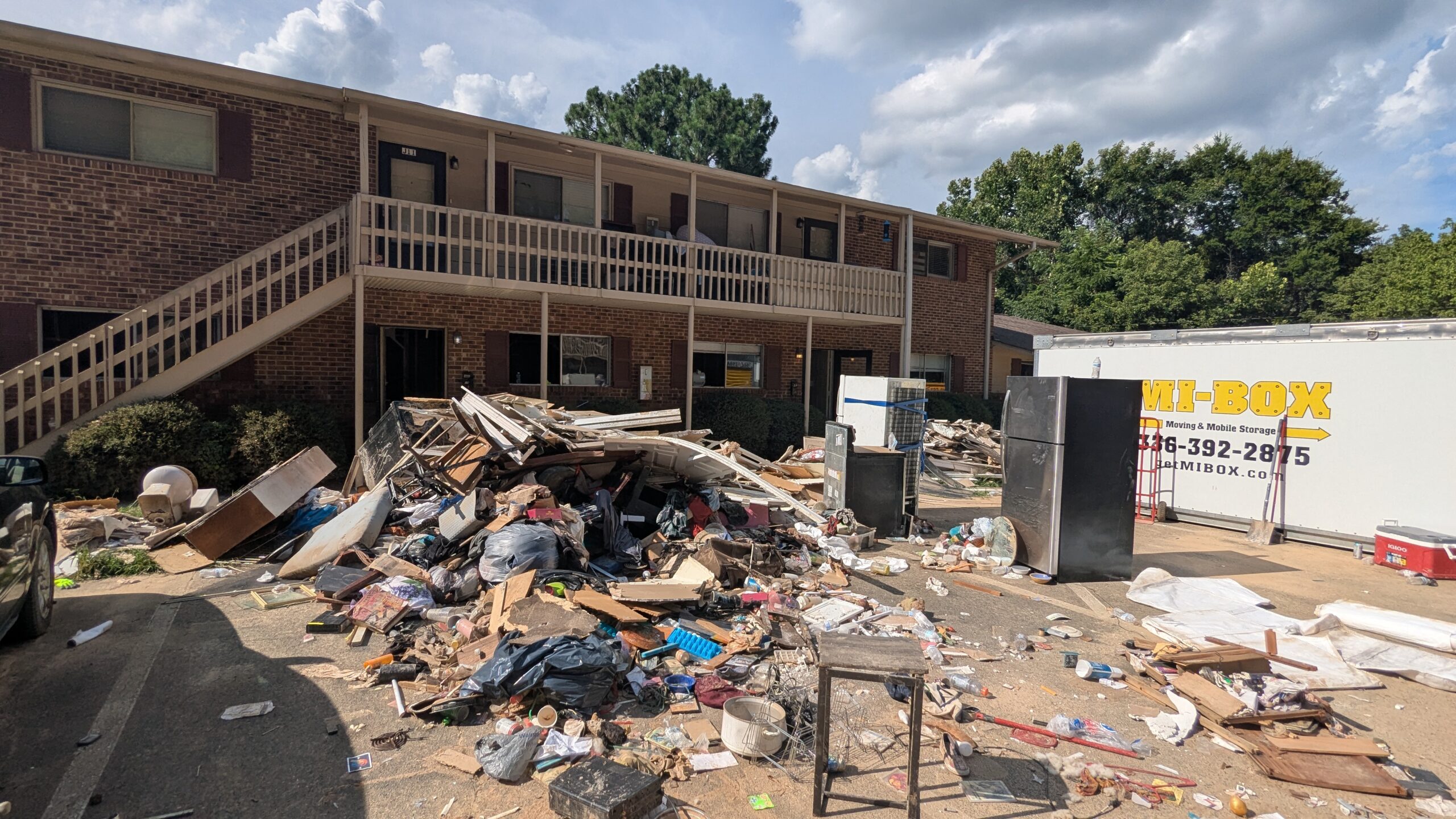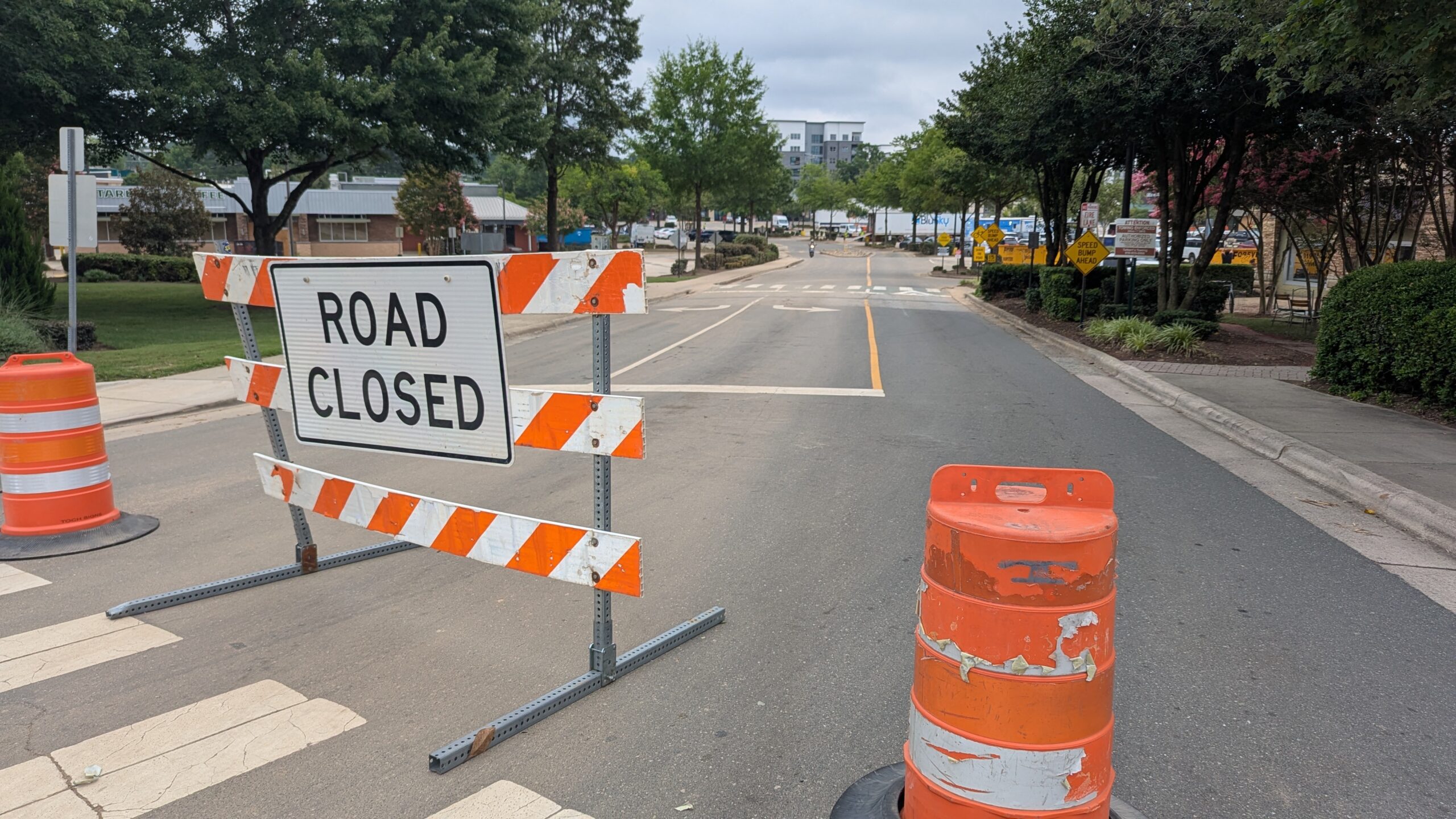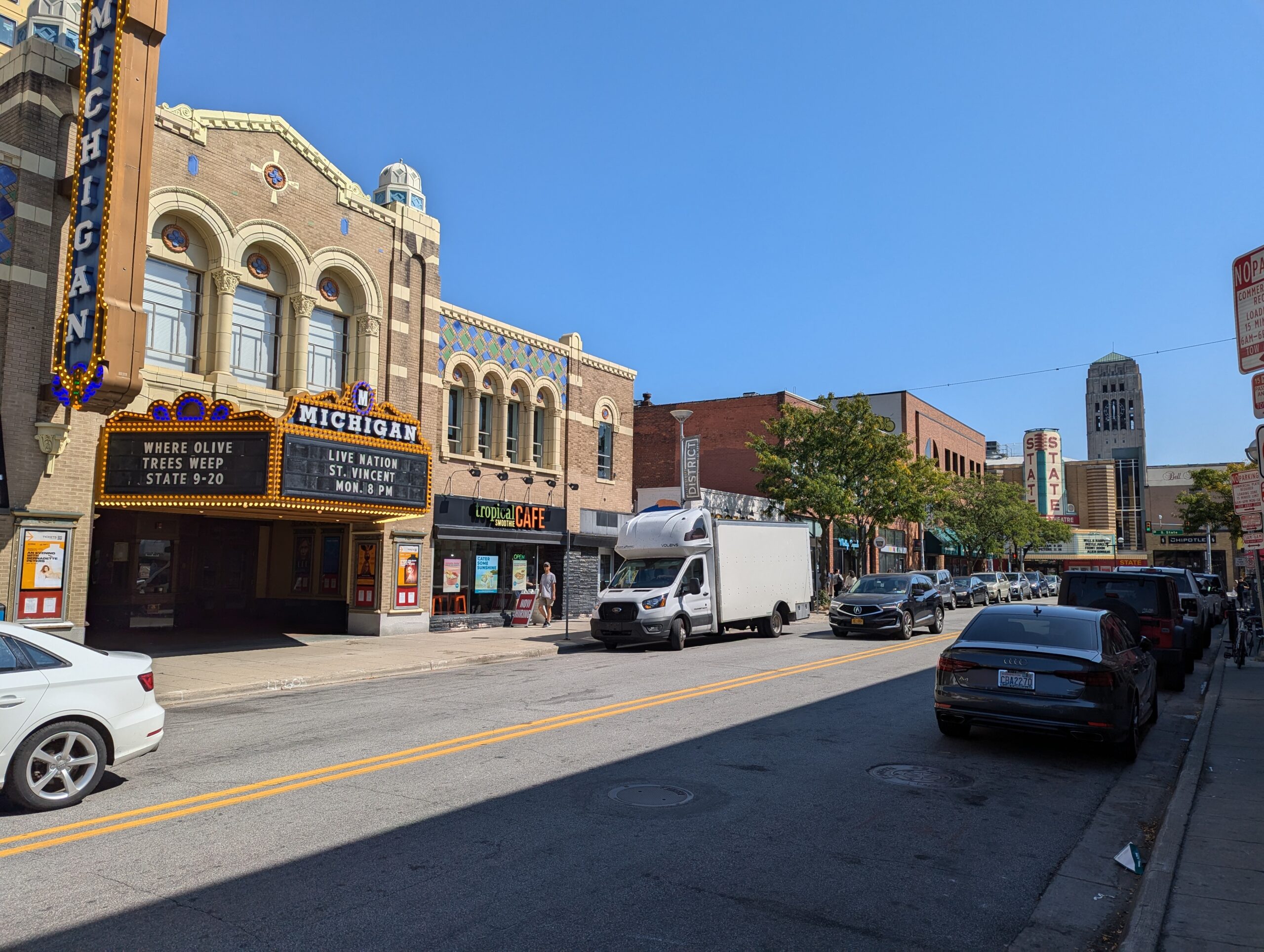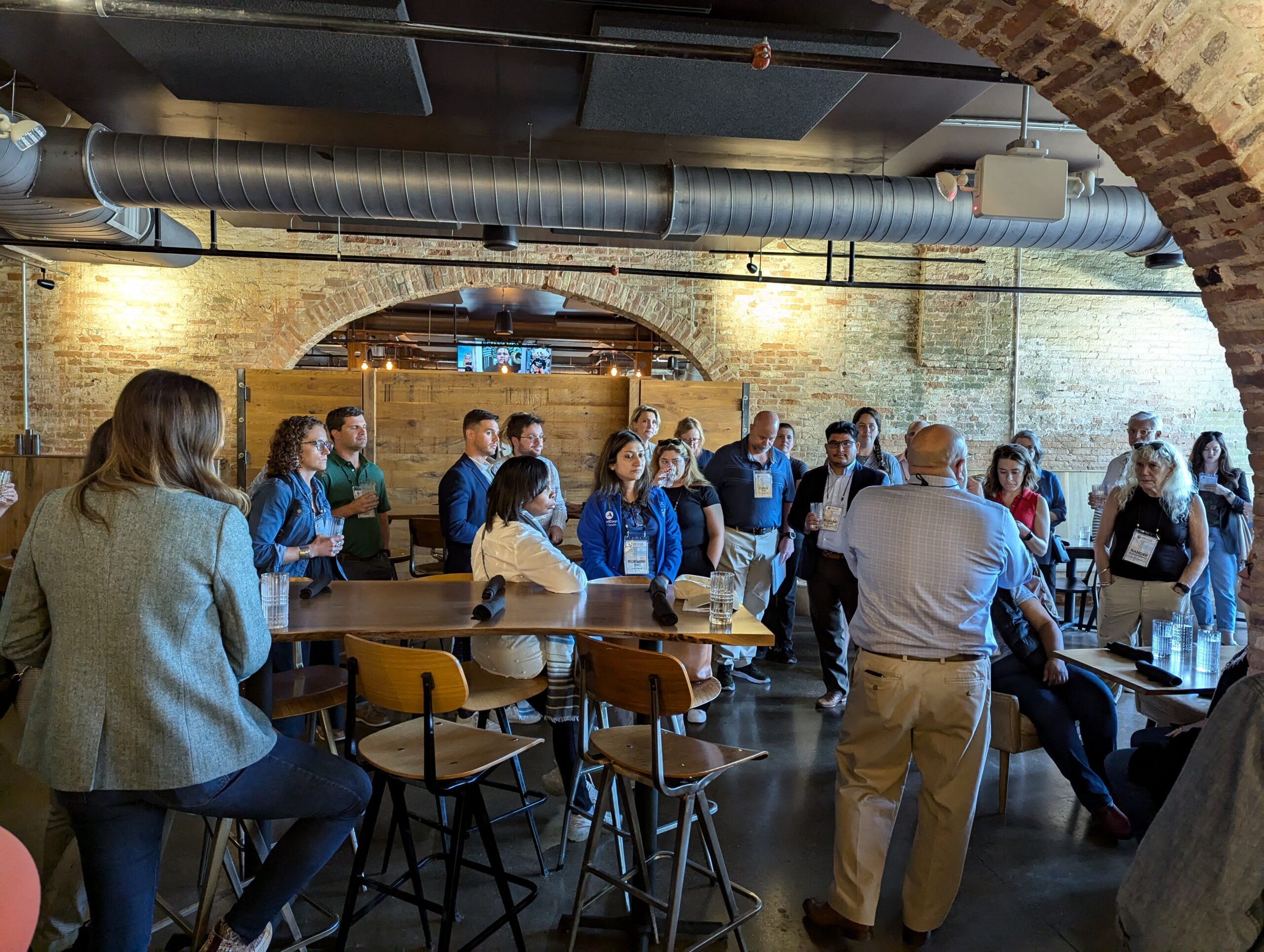What is the state of our community?
Each year, the Chamber for a Greater Chapel Hill-Carrboro presents a “State of the Community” report, a deep dive into local data delivered by Chamber president Aaron Nelson. This year’s focus was largely on housing, with a recent spike in home prices and an increase in the percentage of residents who rent. But there were also some positive takeaways – including strong economic indicators and signs of resiliency in the aftermath of the COVID pandemic.
Click here to view the slides from this year’s State of the Community report.
97.9 The Hill’s Aaron Keck spoke with Aaron Nelson about this year’s report, in a conversation presented by the Chamber for a Greater Chapel Hill-Carrboro.
Click here to listen to the conversation in full. The transcript below has been lightly edited for clarity.
Aaron Keck: What are some of the key takeaways this year?
Aaron Nelson: The cost of housing. Chatham County still is leading the way: the median home price for the last six months is $600,000, (unchanged from) 2022. In Orange County, it continues to creep up, approaching now $500,000 as the median. (In) Chapel Hill and Carrboro, the cost of housing is now higher than anywhere else in our region – and in Carrboro in particular, the cost of housing is up $200,000 over just 2019. Plus additional taxes, plus the cost of borrowing: the cost to live, or to buy a new home in our community, is out of reach for most.
Keck: One of the other data points (examines) who’s moving into Orange County and who’s moving out. The people who are moving in are wealthier, and the people who are moving out are less wealthy.
Nelson: And if we are going to be able to recruit and retain the faculty and staff that we need to keep our university excellent, (and) the employees for our healthcare system and our small businesses, then figuring out how to produce more housing is a key priority. Supply is going to have to be part of this solution. We are not making many new homes: I think (only) 28 new for-sale homes were produced in all of last year.
Keck: There was a big spike in home prices in 2021 and 2022 – in 2023, it’s been kind of flat across the board. Is that a positive step, or is that a blip?
Nelson: It’s flat in Chatham. We saw growth in Chapel Hill-Carrboro, (though) we are seeing some reduction in the cost of rent. As we have added more (apartment) supply, we’ve seen some reduction in cost.
Keck: Orange County is about the same as North Carolina: about a third of residents are renters. But in Chapel Hill-Carrboro, it’s now a majority of residents who rent.
Nelson: Right. I think 58 percent of people are renting (in Carrboro), and 51 percent of folks in Chapel Hill. So we’ve got to think about what our goals are, (adding) supply in the homeownership market as well as in the rental market. Lately in the last several years, it’s been rental that is easier to finance for developers, and that’s why we’re seeing all of these apartment complexes. I get lots of questions about “why not more for-sale homes?” And we will see some condos coming – but in general, condos and townhouses, in order to get the money to build them, you have to pre-sell half of them. Single-family (homes) is where we’ll have to do some investing: finding the land in order to make that possible, (and) changing some of our rules and regulations on where that can be built, will help a great deal.
Keck: Does this affect who lives in Chapel Hill? There’s been a decrease in enrollment in Chapel Hill-Carrboro and Orange County Schools – and I wonder if that’s because the people who are moving in are just starting out, maybe don’t have kids.
Nelson: I think the different types of housing draw different types of folks. The apartments in Meadowmont, East 54, these are developments that have apartments and condos, but don’t make any children for the public school system.
Keck: I’m always fascinated by the number of people who live outside of Chapel Hill and commute in, versus the people who live inside of Chapel Hill and commute out. It tends to be pretty similar. And this also becomes a housing question: we’re doing this push to add more housing stock, (and) part of that is affordability (and) keeping up with demand, but part of that is to cut down on traffic, the burden on the roads. So what do we need to do, to ensure that the people who are moving into Chapel Hill and Carrboro are also the folks who are working here?
Nelson: It’s a great question. Jobs have grown faster in Orange County than housing. And when jobs grow faster than housing, you import your labor. So every morning, 80,000 people drive into Orange County from somewhere else. And about 40-45,000 people drive out of Orange County. If we could grow more housing in our community, and bring those people closer to where they work, we would reduce traffic, we would reduce pollution, we would reduce the needs on the roads. In fact, civic participation goes up the closer the people live to their homes. The longer the commute, the less likely they are to be involved. And bringing the housing for our university, for our public school system, for our healthcare system closer to the employment center will benefit all of us.
Keck: Is there a community out there that should serve as a model for ours? A community that’s able to be both desirable and affordable?
Nelson: It’s easier to find the ones that we don’t want. The Ghost of Christmas Future is Vail and Boulder, and other places where people are commuting 45 minutes, an hour, an hour and a half, in order to find housing. (But) we see places that have chosen to invest, and to grow the supply of their housing more proximate to where people work. Asheville is a place that has been building some more housing. Athens, Georgia. Wake County is doing a nice job of growing their supply of housing, to make sure that folks are commuting less and living closer.
Keck: What other points stand out to you this year?
Nelson: As you mentioned, school enrollment is down. We have almost 1000 fewer children in Chapel Hill-Carrboro City Schools, and about 1100 fewer children across both districts, and that has been on the decline for over the last three years. Some of that is homeschooling, some of that has been private school, (and) some of that is people living here without children, or delaying when they choose to have children. But what that means is: we shouldn’t be as afraid (of adding more housing). Housing used to be a real challenge, because we were afraid it was going to swamp our schools. Now we can afford to bring housing without it swamping our school system.
When we look at schools, one of the big concerns is school performance. COVID caused a great deal of learning loss, and our school system is going to have to spend a lot of time and resources to help those children catch back up. I think our school system is up to the challenge, (and) we’ve seen some great rebounding.
Keck: Any positive trends that should be noted?
Nelson: Retail sales are through the roof, incredibly healthy. That means we have wages being paid in our market, and folks have disposable income to spend. We’re seeing real strength and growth in our economy, new companies being created, hiring new people. Wages are up substantially per capita. Income continues to rise. Poverty is on the decline. Food insecurity is on the decline. We remain one of the greatest places to live and work and shop and play, (and) that also means we have the resources that we need to address our challenges.
Keck: And I know there’s one nagging issue for the community, which is this big gap between the residential and commercial property tax base. That’s shrinking too, right?
Nelson: Oh, yeah. That’s one of the most exciting things to come out of this report. We have run our government and public services on the backs of a residential property tax base. That’s sometimes 80 percent residential, 20 percent commercial. And that’s expensive. It’s much more healthy if you have a stronger commercial tax base. Commercial (property) consumes fewer government services than residential property does. And we’ve seen real gains: Orange County went from 21 percent commercial to 27 percent commercial, and Chapel Hill. (is) 34 percent commercial. (That’s) a much healthier mix. We’ve done a nice job on economic development and our commercial properties are improving in value – and as we continue to invest, particularly downtown, I think we’ll see the benefits of that.
Keck: And speaking of that: I’ve told people on many occasions, and I’m glad to see this reflected in the report, that we had more restaurants open during the pandemic than close, which I think is significant in and of itself. (But) the thing that stood out to me is that more restaurants closed before the pandemic than during and after. That was shocking.
Nelson: Yes. In a normal two-year period, we might lose 200 restaurants, a hundred a year. And it was much less than that in the pandemic. That means the government support helped. The (COVID-era) investments that were designed to keep restaurants alive, kept them alive. When that was over, some of them did not make it. But over the last two years, we’ve seen real growth in the restaurant industry. A hundred restaurants opened in fiscal year 2023, while only 52 closed. We’re a foodie place, right? We spend a lot of our money as a community on food, and our restaurants are feeling that support.
Chapelboro.com does not charge subscription fees, and you can directly support our efforts in local journalism here. Want more of what you see on Chapelboro? Let us bring free local news and community information to you by signing up for our biweekly newsletter.











